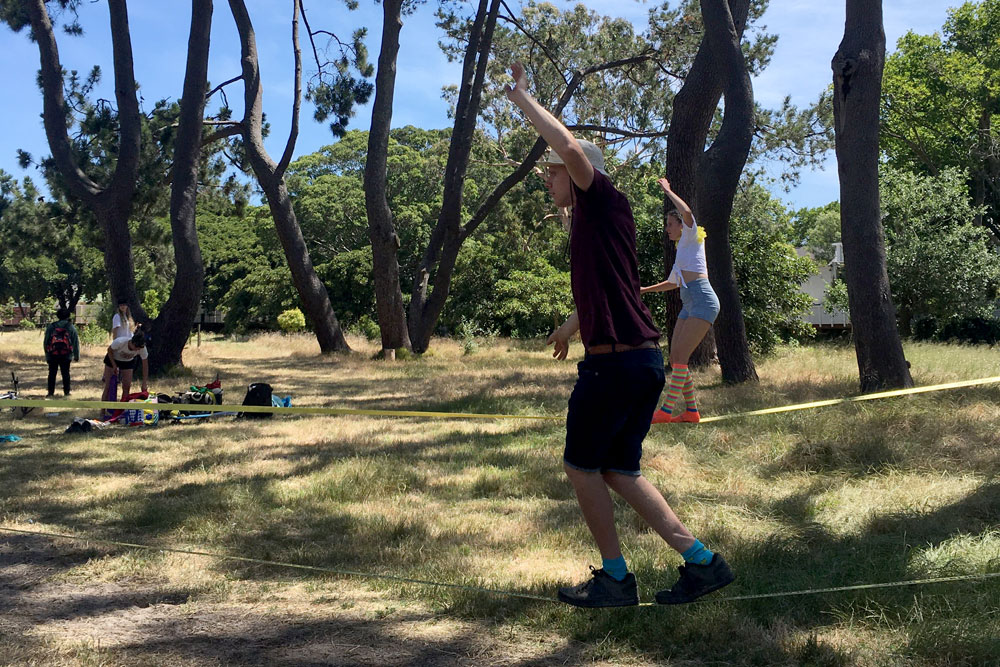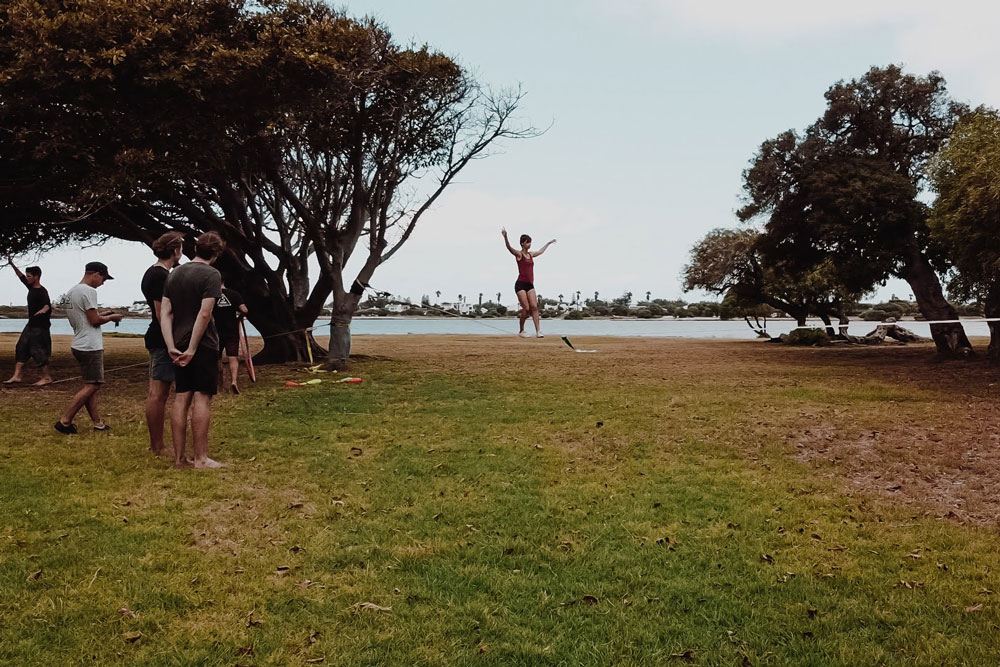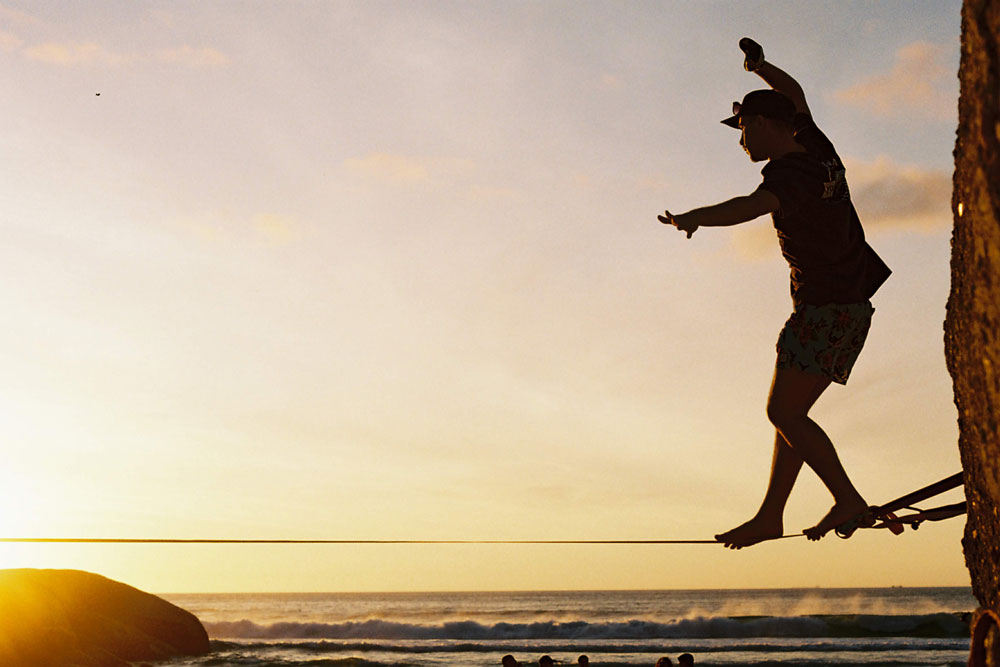Learning the basics of this sport and putting them into practice can help you to walk on a slackline. While I started slacklining at age 23, a beginner slackline low to the ground is perfect for all ages. The activation of your core muscles helps build your balance, bringing confidence into other areas of your life.
If you are interested in learning more about slacklining and the best skills to learn as a beginner, read our guide to slackline basics below.
What is slacklining?
Slacklining is a balance sport performed on a flat webbing tensioned between two points. The slackliner can walk on the webbing, perform tricks, or simply find meditation in the act of balancing while suspended in the air. Luckily, slacklines for beginners are easy to set up and provide a safe and fun challenge.

Setting up a Beginner Slackline
The ideal beginner slackline is low to the ground and between 3 to 5 meters in length. This allows you to learn the basics quickly and safely. Beginner kits consist of two-inch wide webbing made from woven polyester. The kit includes anchors and a tensioning system.
Beginner slackline kits use a ratchet to tension or the primitive technique. The latter uses the least amount of gear and is typically used for one inch wide webbing made from polyester or nylon. You can read more on the gear you’ll need for primitive rigging below.
A tensioning system using pulleys is commonly used in longlines and highlines. It can help to increase the mechanical advantage to reach the tensions necessary for longer lines (more on rigging below).

The 8 Disciplines of Slacklining
The disciplines of slacklining are parkline (classic style), trickline, longline, highline, rodeoline, waterline, and tandem. Interestingly, people also perform yoga on static parklines.
Taking your first steps on a classic slackline in the park helps you to practice your basic slacklining skills. The length of beginner slackline kits is no longer than 30 meters and is suited to a line setup at knee or waist-high between two trees.
The basic skills you need to learn to feel comfortable on a slackline longer than 30 meters are mentioned below. With these basic moves and the below knowledge on how to set up a primitive slackline, you’ll improve your slacklining skills rapidly.
Building Basic Slacklining Skills
To build your balance you’ll want to slackline often. The skills explained below may come naturally to you, or you may find them near impossible. With the basic slacklining skills, you can explore tricklining, longlining, rodeo lining, and tandem lining. Yoga, waterlining, and highlining are all incredible disciplines that you can explore as a beginner slackliner.
Try the below moves on the length of line you feel comfortable with. When you are comfortable performing the moves, increase the length of the line. Our encouragement to you is to try them all, and remember to keep a single point of focus when on the slackline.
Here are tricks on a two inch line set up low to the ground –
Standing on a slackline:
Shorter lines lower to the ground are easier to walk. You’ll want to master the below list of basic movements before increasing the length of the line.
- Moving forward
- Standing in exposure (Sideways)
- Turning on a slackline
- Moving backwards
Note: It is not recommended beginners walk at heights above 50cm.
Learn Static Poses:
With yoga poses and foot plants, the world of static slackline poses allows for beautiful freestyle. Explore this connection to your body, and remember to stretch/find your flexibility before trying the movement on the line.
- Drop Knee
- Footplant
- Crook
- Gambit
- Double Footplant
- Buddha
- Buddha Drop
Now that you have mastered these skills, try a combination of maneuvers.
Learn to Bounce on a Slackline:
We first learn to walk. Toddlers will insist on bouncing, and there is no reason you shouldn’t experiment with this thrilling trick.
- Practice a Jumping Mount
- Practice a Jumping Dismount
- Straight Jumps Upward
Feeling comfortable? Try switching the jumps. The position of your feet alternates during your time in the air. This small combination of moves makes jumping worth the effort to learn. Build your confidence on shorter lines and remember to try lots of different moves.


Leave a Reply